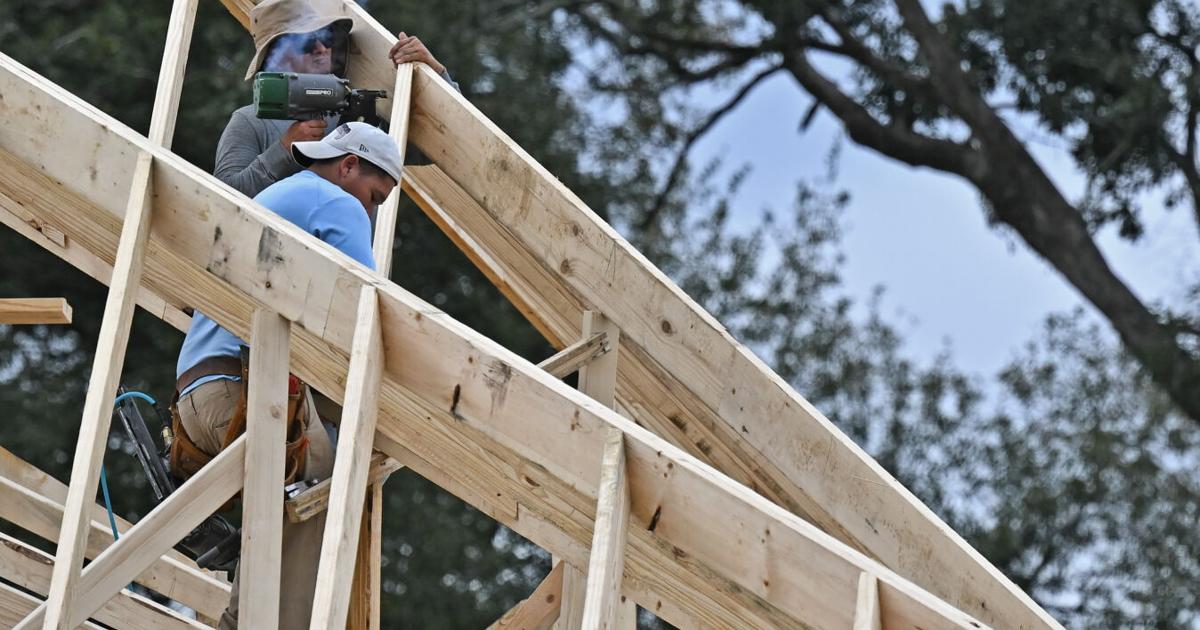
While rising interest rates, persistently high inflation and increasing insurance costs are having an impact on all sectors of Baton Rouge real estate, local experts are fairly optimistic about the state of the market.
Speakers at the Trends in Real Estate seminar Thursday said the market for single family homes remains strong, office occupancy rates are ticking up, there’s an immediate need for more industrial space, the amount of vacant retail properties is declining and apartment rents are going up.
And even though the national economy is starting to slow down as a result of the interest rate increases implemented by the Federal Reserve over the past year, the forecast isn’t as bleak as it was during the Great Recession of 2008, said Kevin Fagan, a senior vice president with Moody’s Investors Service, who served as the keynote speaker.
“We have a relatively positive outlook for gross domestic product growth,” he said.
Even though the number of homes and the dollar volume of home sales were down in 2022, compared to the year before, market conditions remain strong, said Tom Cook, an appraiser with Cook, Moore, Davenport & Associates.
“2022 was way above from the sales we had from 2015 to 2020, but the numbers were down because we had such a banner year in 2021,” he said. “We could not keep the 2021 market going because it was too hot and growing too fast.”
Cook noted that, when he was working as a real estate agent in the 1980s, it took two to three months to sell a house. Now houses are being listed and selling in a few days.
One of the factors that’s driving the demand is a shortage of homes. Cook said there were fewer houses built during the 2010s than in any decade going back to the 1960s.
Another sector where there is a shortage of inventory is in the industrial real estate market.
Evan Scroggs of NAI/Latter & Blum said the vacancy rate for industrial properties fell below 2% in 2022.
Baton Rouge is a relatively small industrial real estate market, partially because of the proximity to cities such as Houston, Dallas and Atlanta. But Scroggs said the area is underbuilt, with 36.5 million square feet of industrial space. In comparison, there were more than 45 million square feet of speculative industrial space built in Atlanta and Dallas in 2022.
“In Baton Rouge, build-to-suit is what people want to do,” he said.
The local market for warehouse space is trending toward “functional obsolescence” because three-quarters of the inventory is more than 20 years old. “It’s easier to attract talent to a better facility,” Scroggs said. “There’s a flight to quality.”
The same demand for newer, high quality space is driving activity in the office market, said Branon Pesnell of Corporate Realty. That’s important for businesses that are luring employees back to the office in the aftermath of the COVID pandemic or trying to recruit workers in a tight labor market.
“Older buildings that have not been updated in a long time are seeing a rise in vacancies, specifically here in Baton Rouge,” he said.
Because the petrochemical industry and state government are stable pillars of the local economy, the Baton Rouge office market is insulated from some of the national issues. Pesnell noted that, based on keycard swipe data, about 60% of local workers are back in the office, compared to the national average of around 50%.
The Trends seminar started in 1988 as a joint project of the commercial and investment division of LSU’s Real Estate Research Institute. The goal of the program is to educate members of the division, their clients and other real estate practitioners in the Baton Rouge area about the local real estate market.
This post was originally published on this site be sure to check out more of their content.









